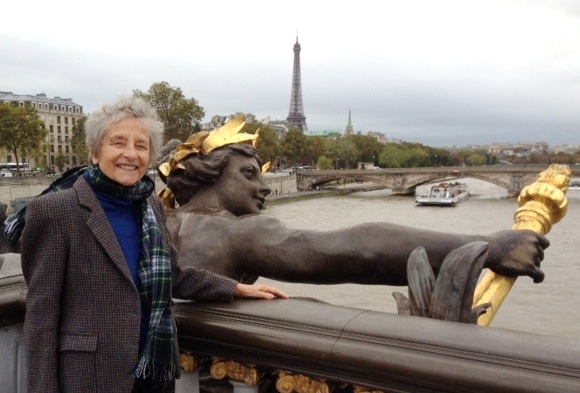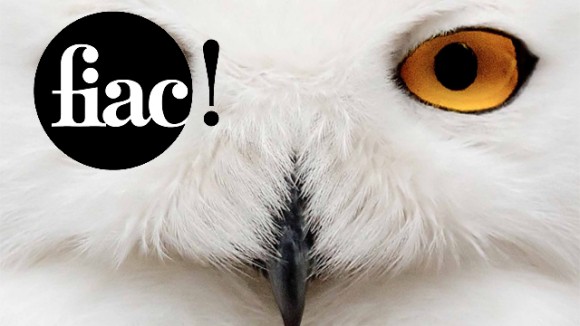
She’s back! We’ve probably been asked more often about what has happened to Nicole Prévost Logan than any other of our wonderful writers. You see, Nicole takes a break from writing for us in the summer when she is living in Essex, Conn. But now she has returned to her house in Paris and (metaphorically) picked up her pen again … and we’re delighted … along with many of our readers!

In late October every year, France attracts visitors from around the world to take part in the FIAC (Foire Internationale de l’Art Contemporain.) Multiple exhibits open, not only in museums, but also hors murs (outdoors) on the grounds of historical monuments like the Chateau de Versailles, or on public squares and parks like Place la Concorde or the Jardin des Tuileries .
For a few days, Paris becomes the capital of arts, fashion and design. The main event of the FIAC takes place in the Grand Palais and was attended this year by 75,000 professionals in the arts and owners of the 173 most prestigious galleries of the world. (not individual artists.) The high entrance fee was set at $40. The works exhibited were in all media – paintings, sculptures, videos, installations. Values of the objects varied from a few thousands euros to several millions.
What makes the specificity of the FIAC is that it expands every year and becomes increasingly accessible to the general public. The French minister of Culture and Communication Fleur Pellerin, who occupied the media center stage during the week, stressed the civic importance of the richness and diversity of culture open to all in the public space.
When walking around Paris it seemed impossible not to stumble over some work of art: on the banks of the Seine in the new Cité de la Mode et du Design, in the department stores or the elegant lobbies of five-star hotels palaces. In the historical districts of the Marais, or St Germain des Prés, unbridled art creations were the norm. The “off” art found additional space under white tents. Digital art celebrated its tenth anniversary near the Alexandre III bridge.
The “Outsider Art Fair” (art brut) – made up of the works of mentally disturbed , marginal or self-taught artists – placed its 38 stands in a private mansion. It included the works of the well known American artist Henry Darger whose permanent collection is in the New York American Folk Art museum.
To stroll through the Jardin des Tuileries was to be in for a great treat. One could admire whimsical, mostly thought-provoking artistic creations on lawns, near the two pools, along the tree-lined paths. Young and articulate art students from the Ecole du Louvre described the works to the curious passers-by.
Just two examples. Heimo Zobernig, who lives and works in Vienna, created a tall androgynous statue. The body was made of three pieces from three different sculptures scanned in 3D. The head, legs, and torso were assembled digitally, raising the question of figurative sculpture. On the Tuileries bassin rond, a transparent sphere, of about 10 feet in diameter was floating under the motion of a crystal chandelier hanging inside and spinning around. The artist’s intention was to show the hidden properties of objects by the incongruous mix of an inflatable toy, a scooter’s chain and a 24 volt rotating mechanism.
The visitor reaches the Place de la Concorde. Four pavilions mesmerized the crowds. They had been erected by St Gobain – the French company specialized in construction material for the past 450 years (it built the Louvre pyramid.) The pavilions showed the company’s innovations for the future: how can sensorial modules create thermic and acoustic comfort or a 21st house being built entirely from materials created by 3D printers.
After an absence of a few months, what better way than the FIAC to reacquaint oneself with the Paris scene?